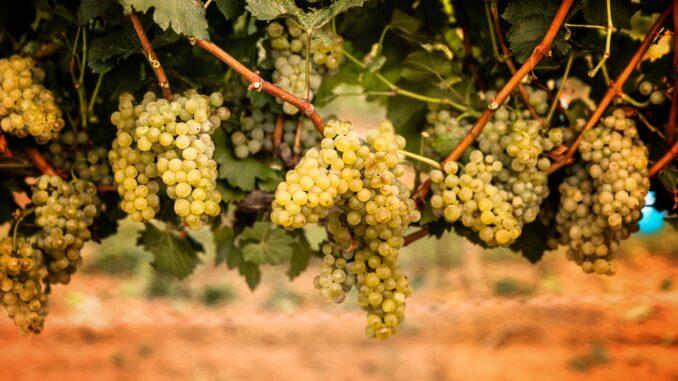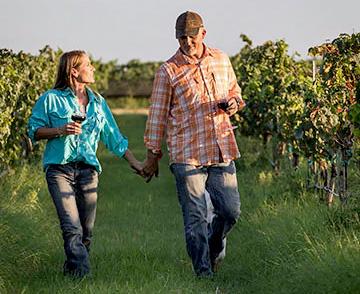
To Texans, many do not know the Hickory Sands of Mason county. But, around the Texas Hill County town of Mason you will find it and it brings an anomaly when compared to much of Texas. There you find acidic sandy soils, versus the high pH limestone-infused soils that cover most of Texas. This brings something different to the table in terms of winegrowing. And, in many years, it brings a whole other kind of winemaking particularly noted recently at Dan and Jeanie McLaughlin’s Robert Clay Vineyards. They are growing and making a so mighty fine Chardonnay.

I recently held a blind tasting for a few of my wine friends of Robert Clay Vineyards 2018 Chardonnay: one filtered and one unfiltered. The responses from the tasters were somewhat different than expected.

When I asked them to name the variety of grape in the wine, I got three different answers. One taster said, “Viognier”. I reckoned that being in Texas, perhaps the only white wine this person suspected I might pour was Viognier. But, shortly after, this taster recanted a bit saying “It likely wasn’t Viognier since it had some floral character, but more muted than what would be expected from Viognier. The second taster commented, ”The wine is pale straw, citrusy with nice acidity, perhaps it is a Sauvignon Blanc”. The third taster, after the big spread in the first two guess, was stumped and just sat back and made no prognostication of grape variety.
When the reveal came, none of the tasters seemed surprised. The two wines that I poured were both Chardonnay, but in a rapid retort, all of the tasters agreed that these wines were not the standard oaky California Chards one might expect and were also not likely to be from Texas. Surprise! In the final analysis, they were surprised to hear that these two Chardonnays came from grapes grown by Dan and Jeanie McLaughlin right here in Texas: Mason County and Robert Clay Vineyards to be exact; smack dab in the middle of Hickory Sand country.

For me, these wines brought a quick remembrance of two previous Texas Chardonnays of notoriety. In the early days of the modern Texas wine industry, Llano Estacado Winery placed a double gold medal for its 1984 Texas Chardonnay in the San Francisco Fare and Exhibition Wine Competition. In more current days, Fall Creek Vineyards’ 2014 Chardonnay, Certenberg Vineyards (Yep, grown by Alfonse Dotson and Martha Cervantes in not to far away Voca, TX), was awarded the “Best White Wine” in the whole dang Houston Rodeo International Wine Competition in 2017.
The next question for the tasters of the Robert Clay Vineyards 2018 Chardonnay was to decide if they preferred the filtered or unfiltered wine. On this question, the tasters were unanimous… unfiltered. From my conversation with Dan McLaughlin, he said, ”I mainly made the filtered wine so that when I taste my wines with people, they can see for themselves how much more my unfiltered wines have to offer.” From my perspective in the tasting, both RCV Chardonnay’s had excellent acidity, pear and citrus notes, with a bit of white flowers. By comparison, the unfiltered Chardonnay, also gave minerally notes on the nose and a richer feeling on the palate than did the filtered wine.

Afterwards, while savoring these Chardonnays, I though back to 2014 and remembered after tasting Dan’s Chardonnay grapes in the vineyard that year, I proclaimed 2014 a “Chardonnay Year” for Texas. Perhaps, the subsequent Houston Rodeo win for the 2014 Fall Creek Vineyards took my proclamation a step further. So, I thought, ”What about 2018?” So, I looked online for the historical 2018 weather records for Mason, Texas. What I found was that during the growing season, the temperatures were moderate, mostly in the nineties, barely breaking into triple digits. It was a dry year, only a couple rains, low humidity brought good day-night diurnal temperature swings between mid-90s and upper-60s, so important for growing good Chardonnay. It was also a windy growing season that helped to reduce humidity in the canopy and reduce fungal disease pressures.
So, from my semi-scientific and likely non-statistically relevant study, I think that I’m ready to proclaim 2018 another ”Chardonnay Year” for Texas… at least for Robert Clay Vineyards. While you can still get it, please give these RCV Texas Chardonnay wines and Dan’s bold reds and Pet-Nat rosé a try, too.
Make a visit to Mason to the Robert Clay Vineyards tasting room near the town square (tastings are by appointment), or click here to visit their website and click here to set up a visit.


Be the first to comment